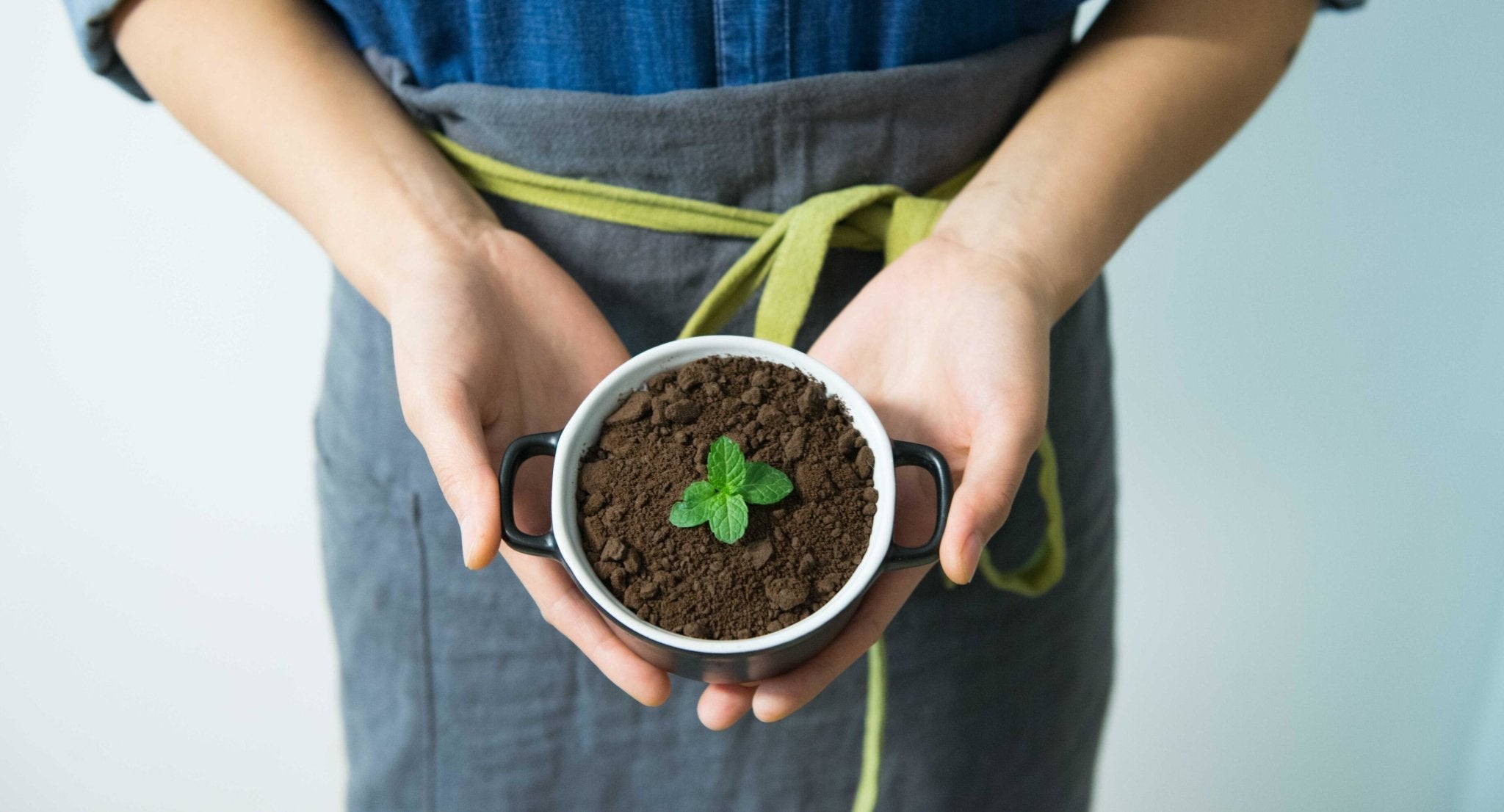Sustainable Practices in Restaurants

In any business today, it is inevitable to think about sustainability. Adopting sustainable practices will dictate the future of our humanity, but it can also be beneficial for your business. Many customers in the restaurant industry look to implement sustainable practices such as using local produce, ethically sourced ingredients, and less waste.
Here at Chef Sac, we also think about sustainability constantly. Our materials are durable and, therefore, extend the product's life, and you know you will have a quality product that will last for years! Most of our backpacks are made from vegan materials and can withstand cold winter, rainy weather, hot kitchen, and even the outdoors.

Here are 5 measures restaurants around the world adopt to become more sustainable:
1. Cook Season Ingredients and Grow Your Own
You've heard it before, but one of the first things a restaurant does to make them more sustainable is to keep the menu seasonal. They change the menu four times a year, according to the season, and rotate in two new dishes every six weeks to use ingredients with short growing seasons, such as tomatoes or pumpkins.
Some restaurants are not prepared to become self-sustainable or grow all their food, but they begin by planting one or two of their specialty items or mass-produced items. If they don't have space for a proper garden, they try to grow vegetables in containers or on the rooftop. Clients love locally grown, organic produce, so they impress their guests, increase efficiency, and save money by growing some of their own. They also grow a garden in their own backyard or on a separate lot. They are able to offset any labor and supply costs by cutting produce purchasing costs.
That is also a chance for chefs to learn about how ingredients grow—carrots, cabbage, beets, broad beans—and give the cooks a new meaning for those items in their cooking. So they are challenged to take care of everything they grow, and the food waste they have can now go back into the garden as compost.

2. Partner with Local Producers
Many may not be ready to switch everything about their supply chain. However, they consider looking at local producers and changing just a few of their items around. Products are shipped frequently from far distances, which causes pollution from transportation, packaging waste, etc. They help in reducing carbon footprint by ordering concisely and keeping things local and in-season as much as possible.
Working with small farms is more labor for a restaurant, requiring multiple phone calls and visits. But the payoff is enormous: the ingredient is fresh, and they don't have to put a lot of effort into it to taste good. Some sea salt and olive oil go a long way to highlight the ingredients.

3. Sustainable Packaging
General waste, or landfill, is the costliest type of waste for restaurants, so they try to find every opportunity to reduce it. For example, recycle glass and cardboard, and return packaging from suppliers to be reused. If they don't have to discard the packaging, they’ll reduce the carbon footprint and lower the recycling bill.
Countless trees are torn down each day, and millions of tons of plastic are discarded each year in the US alone. When selecting takeout and delivery containers, they consider the environmental impact of the packaging and opt for compostable materials. Instead of selecting plastic utensils, they try biodegradable or compostable options. Today, there are many packaging supplies made from natural products like bamboo, sugarcane, PLA plastic, or paper.

Here are some disposables restaurants consider replacing with recyclable, renewable, reusable alternatives:
- Straws
- Utensils
- Plastic bags
- Takeout boxes
- Delivery bags
- Wrapping on tables, chairs, and utensils
- Menus: consider the contactless alternative and have the customers access menu via QR code
Frequently reprinting menus can significantly impact the environment. Instead they use a chalkboard, whiteboard, or digital display for listing specials, changing menus, seasonal recipes, etc.
4. Offer Meatless Options
The number of environmentally conscious consumers avoiding meat and dairy is constantly growing. The production of these items is one of the most significant modern environmental concerns, like taking up land, emitting gases, and polluting ecosystems. Beef production releases more greenhouse gases than any other meat.
Restaurants that want to lower their carbon footprint have started offering plant-based menu alternatives. That's also an option for vegetarian and vegan consumers, which increases the customer base. Many have started integrating protein substitutes such as beans, tofu, or plant-based meats alternatives in their menus.
A different approach taken by some restaurants is to buy meat from sustainable sources. For example, search for local and small organic farms that sell livestock. When they include environmentally conscious and locally sourced meats on your menu, it tends elevate their business. And as a bonus, such meat tends to have a richer, better flavor.

Plant-based menu alternatives are more sustainable, but they can save restaurant owners some money. In addition, produce costs much less than meat, so vegetarian and vegan menu alternatives frequently have more profit margins than meat dishes. It is easy to include a couple of vegetarian or vegan options on the menu beginning with a dish like a burger patty with their own spin.
Alternatively, they also provide a few meatless alternatives besides regular menu options. For example, pasta could go plant base easily with just a little extra sauce, cheese, or mushrooms to make it more filling.
Highlighting vegan or vegetarian menu alternatives with symbols or special headers, and advertising them so customers know they can eat green at the establishment are some of the ways restaurants try to contribute to the environment.
5. Manage Your Food Waste
A crucial restaurant sustainability issue is food waste. The United Nations Environment Program (UNEP) says that 17% of all home-cooked and cooked food in restaurants and shops are wasted. Lowering food waste is essential against climate change and pollution — 8 to 10% of greenhouse gas emissions are from unconsumed food.
Food waste also has critical social implications. Millions of people go hungry every day while households, restaurants, and shops discard excess food. By lowering the restaurant's food waste can help contribute to this cause. In addition, food not in the trash can be food redistributed.
Socially conscious clients will want to know what the restaurant is doing on their part to lower global food waste. Minimizing food waste is great for the environment, and at the same time, it helps the restaurant lower unnecessary expenses. There are several well-known strategies to decrease food waste:
- Rethink Inventory: If there is excessive wastage of food, restaurants start to rethink about how the inventory is kept. It could help to order less food when from the producer. Paying close attention to how much you order and how much it is wasted.
- Reducing Portion Sizes: In some cases, food waste results from big portion sizes. If customers can't finish their plates, rethinking and reducing portion sizes might help control the wastage.
- Use Overripe Fruits: Some foods can take on new life when they are no longer servable. Overripe fruits, for example, are perfect for baked goods and desserts. Doing what you can to use food when they are still safe to eat rather than throwing away.
- Donate What They Can: Contribute to food recycling organizations. These organizations redistribute food that restaurants would otherwise waste. They even make or sponsor their own local donation events — this also would help them earn a positive community reputation.
- Use All Parts of the Ingredients: Fortify or flavor convenience stocks and sauces with leftovers like chicken or beef bones or create items like a carrot pesto.

Being sustainable is an advantage that will help any restaurant to be successful in the years to come.
If you are looking for chef knife backpacks and knife roll bags, Chef Sac is here for you. Check out the complete collection of our culinary gear and get yours today!
- Tags: #Chef bags #Earth Day #Earth Day Kitchen #Green Kitchen #Kitchen essential tools #Knife Bag #Knife Roll #Recycle Reduce Reuse #Restaurant Tools #Sustainability #Sustainable #Sustainable Practices bag for chefs chef backpack Chef bag chef essentials chef gifts chef sac chef secrets chef tools culinary arts kitchen hacks restaurants
0 comments


